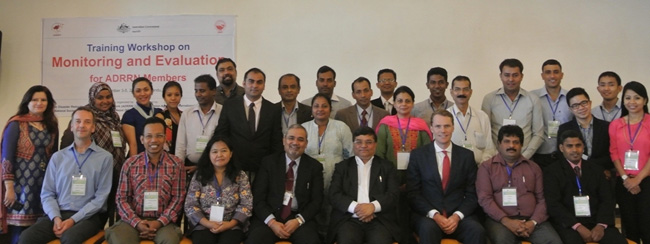- 9th Asia Conference on Earthquake Engineering (9ACEE)
- Strengthening Resilient and Green Education: Equipment Handover for Safer, Sustainable Schools in Kirtipur and Lalitpur
- Climate Change and Environmental Awareness Campaign held in Mahalaxmi Municipality
- Resource-person development program held focused on comprehensive school safety (CSS) including climate change and green school concepts
- International Symposium on Earthquake Risk Reduction in Himalayan Region held in Kathmandu
- Nepal commemorates 27th Earthquake Safety Day with the slogan: "Lessons from the Past Earthquakes: Resilient Structures and Better Preparedness!"
- USAID supports education system restoration in Jajarkot and Rukum West
- Symposium on “Lumbini’s Path to Disaster Resilience and Tomorrow’s Rapti” concludes with “Rapti Declaration 2024”
- Geospatial Information Management Workshop is underway at NSET
- Co-Creation Workshop on Update of Comprehensive School Safety Master Plan and Green School Guidelines held
- View all
Training Workshop on M&E for ADRRN Members
A three-day Training Workshop on Monitoring and Evaluation for ADRRN members has been accomplished in Kathmandu. The Training Workshop was organized by the Asian Disaster Reduction and Response Network (ADRRN) which is a regional network consisting of 42 national NGOs as Core Members and 7 Organizations as Associate Members from 20 countries across the Asia-Pacific region. The program has been made possible with the support from The Australian Agency for International Development (AusAID). On behalf of ADRRN, National Society for Earthquake Technology – Nepal (NSET), one of the founder members of ADRRN hosted this program locally.
Monitoring and Evaluation Training Program for ADRRN members in Asia-Pacific region has been envisioned for creating positive change for building resilience. Main aim is to convene highly interactive participative forum for ADRRN members to discuss and finalize Monitoring and Evaluation strategy.

ADRRN is adopting Outcome Mapping as strategy for capturing a change and impacts of its activities in region along with the members. Outcome Mapping is chosen because it captures the change created as a result of activities carried out by various members. The idea is to propagate the efforts and develop M&E capacity at national and local level through ADRRN members and facilitators developed.
Major objectives of this training program are as follows;
- Prepare Outcome Mapping strategy for ADRRN based on the strategic objectives of the network
- Training of ADRRN members on various aspects of Outcome Mapping
- Raise awareness and build capacity of members to adopt Outcome Mapping as Monitoring and Evaluation strategy for their organizations
Mr. Laxmi Dhakal, Joint Secretary, Ministry of Home Affairs, Government of Nepal addressed the inaugural session as the Chief Guest. Mr. Damien Dunn, First Secretary and Consul, Australian Embassy to Nepal put keynote remarks on the occasion. ADRRN Board Member Mr. Amod Dixit highlighted on this activity and also briefed on ADRRN strategies while ADRRN Coordinator Mr. Mihir Joshi did moderation.

Second session was on Program reconstruction: Reviewing the stakeholders (including the BP) and the programme logic (log frame) which covered the concept on reconstruction of the logic of the program based on Log frame and OM principles; Vision, Mission, stakeholder Mapping (incl. boundary partners).
Next brainstorm was on Clarifying the programme’s results: Results Chains (Output-Outcome-Impact) and Outcome as behaviour changes. It focused mainly on
- Review of Results Chains: Output, Outcome, Impact
- Clarifying the changes in different actors chains
- Draw the boundaries for accountability for each actors
Reviewing current monitoring system: Monitoring Evaluation Questions & information needs comprised Introduction to monitoring and evaluation questions and its relations with manager responsibility to achieve results and responsibility to manage the project.
Another subject discussed was Review existing/ developing monitoring tools & Outcome journal that discussed the information needs (based on MQs) and details of data & data analysis required to answer the questions.
Idea provoking session on Outcome Journal and Outcome Harvesting induced discuss and understand outcome monitoring with existing Outcome journal and outcome harvesting.
Aligning Monitoring & Evaluation to AusAID requirements (Incl. CAPF) & incorporated learning in M&E was about more on aligning with AusAID Policy in: Accountability, Management and Learning
Organizational Practices
Workshop also focused on how ADRRN could remain effective and sustainable - What, who, with whom, when, how much? Discussion put at core the ADRRN Log Frame, ADRRN Monitoring and Evaluation Framework and ADRRN Monitoring and Reporting tools.
With the view to make M&E learning bit more deep rooted, a Field visit was also facilitated to a school where NSET in partnership with Nepal Red Cross Society and American Red Cross had implemented Disaster Preparedness for Safer School in 2010.













